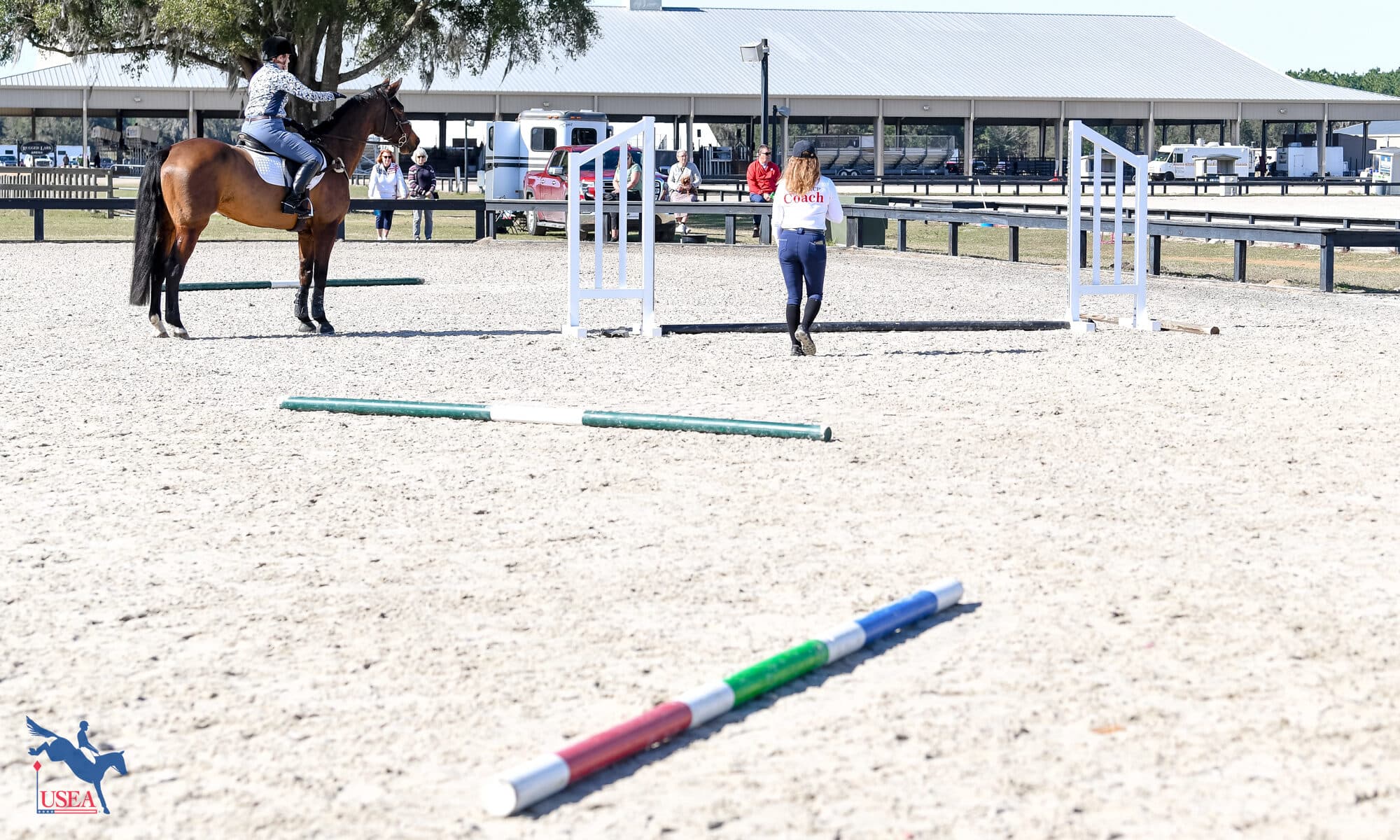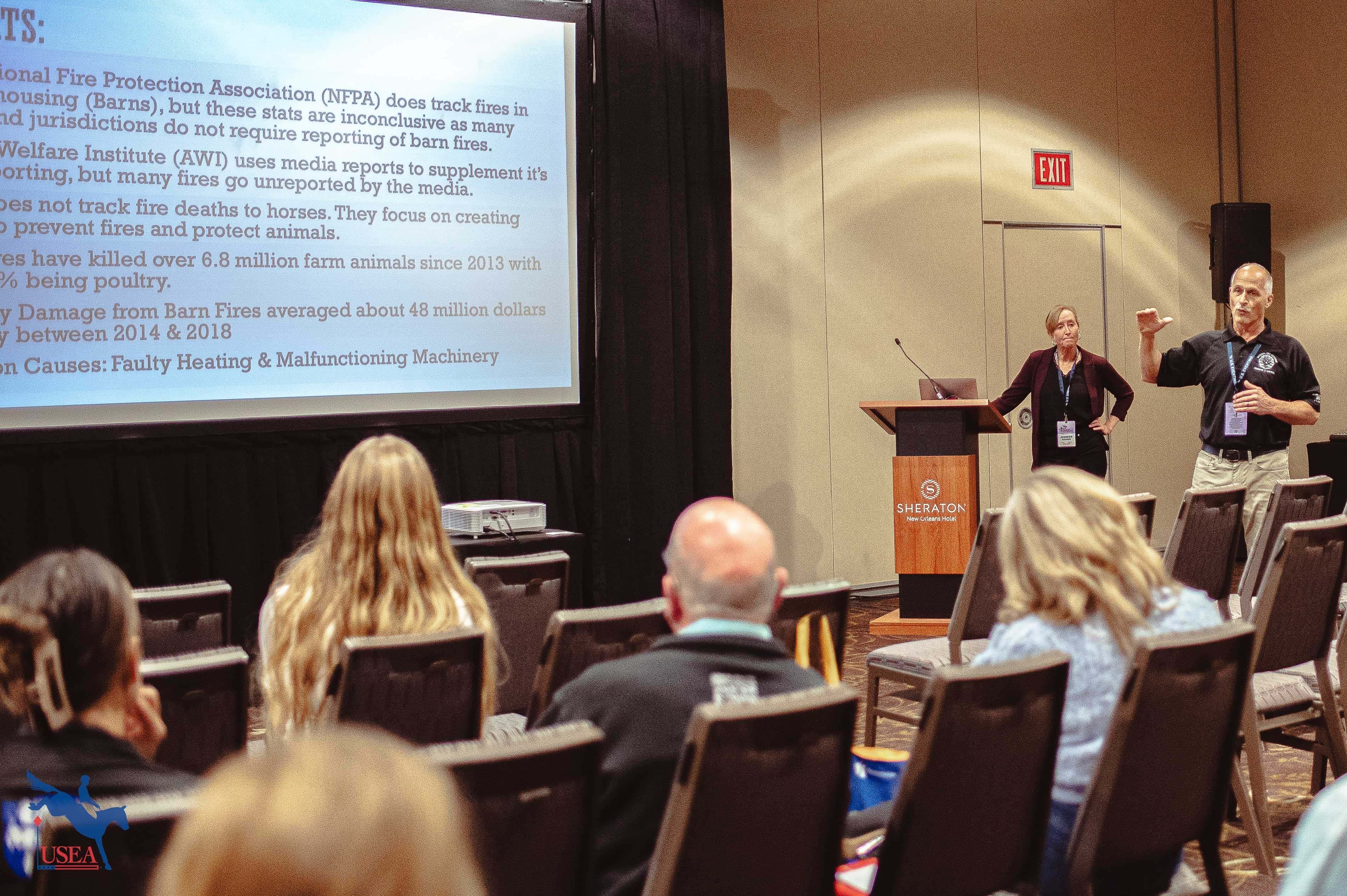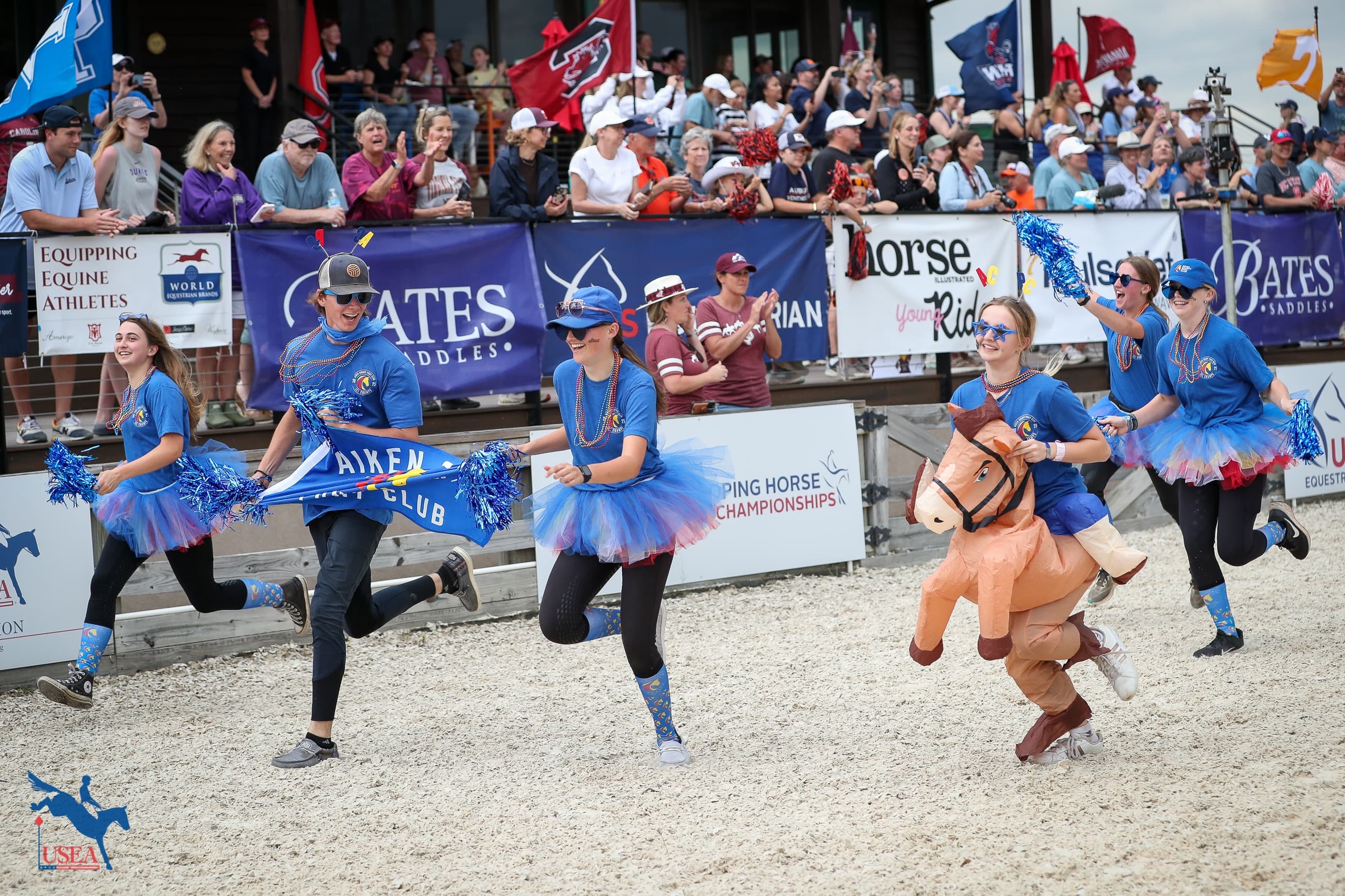Utilizing Pole Work for the Rider's Development

You wouldn’t have to do an extensive search to find many ways to utilize pole exercises to benefit horses in training and development, so this article is going to look at pole exercises in a different way—how can we use them to benefit rider development and in all three phases.
To me this topic could easily turn into a whole book with the amount of variety that can come into play, so my advice is to start simple and just change one variable at a time so the rider can concentrate on their role and grasp the effect. Repetition is key to allowing the rider to learn these concepts, and by using poles regularly the riders can get plenty of practice without needing to over-jump the horse.
For each phase I’ll utilize the "USEA Eventing Handbook By The Levels" to identify what levels may best benefit from each exercise based on the rider skills we are looking for at each level. I’ll give an example that I would use for each purpose. Realize that some horses may not be as comfortable or experienced with pole exercises so be sure to introduce them gradually.
You can increase the rider challenge in any exercise as they progress through the levels by altering both their position and stirrups. In the dressage and show jumping riders can be challenged by going without stirrups. In the jumping phases riders can perform exercises in two-point as well as having stirrups shortened to work on riders’ independent balance.
Refining Skills For Dressage:
Training and Modified Level:
Develop the feel of a horse pushing into lengthen trot
Utilize trot poles and start with a small working trot and shorter distance between the poles (3 1/2’), then increase the distance by 6” with each pole added until the horse begins to lengthen. This will help the rider feel the process of continuing to push the horse into a contact over several steps in order to develop a correct transition forward into lengthen trot.
Beginner Novice and Novice Level:
Create accuracy in ring figures
Instead of going over the poles I will use two to create a channel for the rider to travel through. This can be used for turns onto the center line and with serpentines to help riders find straightness over the centerline between loops.
Show Jumping Effectiveness:
Beginner Novice through Training Level:
Effective Use of the Leg
Meeting a single pole consistently at the canter is quite a challenge on its own to many at the lower levels. This exercise will have the rider approach in the trot and then apply the leg as they start over the poles to ask the horse to step forward into the canter while in the poles. Set a minimum of 4 poles at 9’ apart. Adding more poles will help the rider to feel that the horse not only moves forward from the leg to start cantering but then can maintain the quality of the canter. Once comfortable with the timing of the exercise I would like riders to be able to perform this in two-point as well.
All Levels:
Develop adjustability within the canter
There are so many ways to utilize poles for this purpose depending on the level of the rider. The more strides between the smaller amount, the stride length needs to change, so bear that in mind. For example, a 33’ distance could be two strides or three strides, but those two canter lengths are significantly different, whereas navigating a 60’ distance in five or six strides requires less adjustment to each stride of the canter. Starting with two poles can be enough of a challenge.
Moving to three poles will be a good test for those aspiring to higher levels as there is more of a strategy involved to having it ride smoothly. As an example, for the Preliminary level I would set three poles each 45’ apart and expect riders to be able to ride it in four strides to four strides, three strides to three strides, four strides to three strides, and three strides to four strides with the understanding of how to make those adjustments in a smooth manner.

Beginner Novice through Preliminary Level:
Creating accuracy of a bending line
Like the dressage, my third example with not involve going over the poles. While I’ve listed this as creating accuracy of a bending line, it also directly ties to helping riders accurately navigate approach and departure turns as well.
Place your pole parallel to the line you would like riders to stay on and position it where you would like the point of turn to take place. If there is more than one point of turn you can use an additional pole. I prefer to have the riders navigate around the outside of the pole to prevent cutting the turn, or you can create several different turn options so the riders understand the effect of changing the line.

Building Cross-Country Skills:
All Levels:
Accuracy of Holding a Line
At all levels I think riders need to practice holding a line out in the field. This can be done at gradually increasing speeds as appropriate for the level of the rider. The two easiest ways to do this with poles would be to use skinny poles placed either in lines or in random patterns on varying terrain or to have riders focus on navigating regular length poles by specifying staying on the edge of one side. For the higher levels you would combine all elements of an accuracy line, adjustability question, and terrain to show effectiveness of the rider. Really, it’s not about exactly what you set but about having a clear intention for what you are trying to achieve.
Modified and Preliminary Level:
Develop timing for creating a coffin canter
Show the window for creating the change in balance and length of stride to create a “coffin canter” by rebalancing the horse with three bounce poles set 10’ apart. The first one placed approximately five strides out from where a jump could or would be and adding the additional two rails set further from the jump.
Being able to smoothly navigate the bounce poles will help the rider to feel whether they have achieved the appropriate canter. This placement is to signify when the rider should be finished with their rebalancing efforts and then concentrating on maintaining the canter they have created while the horse assesses the question.

Beginner Novice and Novice Level:
Create awareness of stride length and balance change on terrain
This is very simple and doesn’t require a set distance. I would set two poles on a slope and allow the rider to canter both directions and determine a comfortable number of strides for their horse then work to consistently achieve that same number of strides whether going up or down a slope. The riders should be able to accomplish this both in two-point and while sitting.
If any of these exercises seem really challenging to accomplish, I would recommend taking a moment to assess what element is missing. Especially when using the poles in a field setting you may find out where there are weaknesses that you can work to improve. The poles act as a guideline for the rider to recognize both their own effectiveness as well as their horses’ responsiveness, and those are key elements to being successful in all phases.
For more coaching ideas and insights plan to attend the 2025 ECP Symposium at Galway Downs in Temecula, California from Jan. 14-16, 2025!
Emily Mastervich Beshear is a USEA Eventing Coaches Program Level V-certified coach. A five-star rider, Beshear is based in Somerset, Virginia, at her Deep Purple Eventing. She coaches riders from local starter trials to the international levels.














